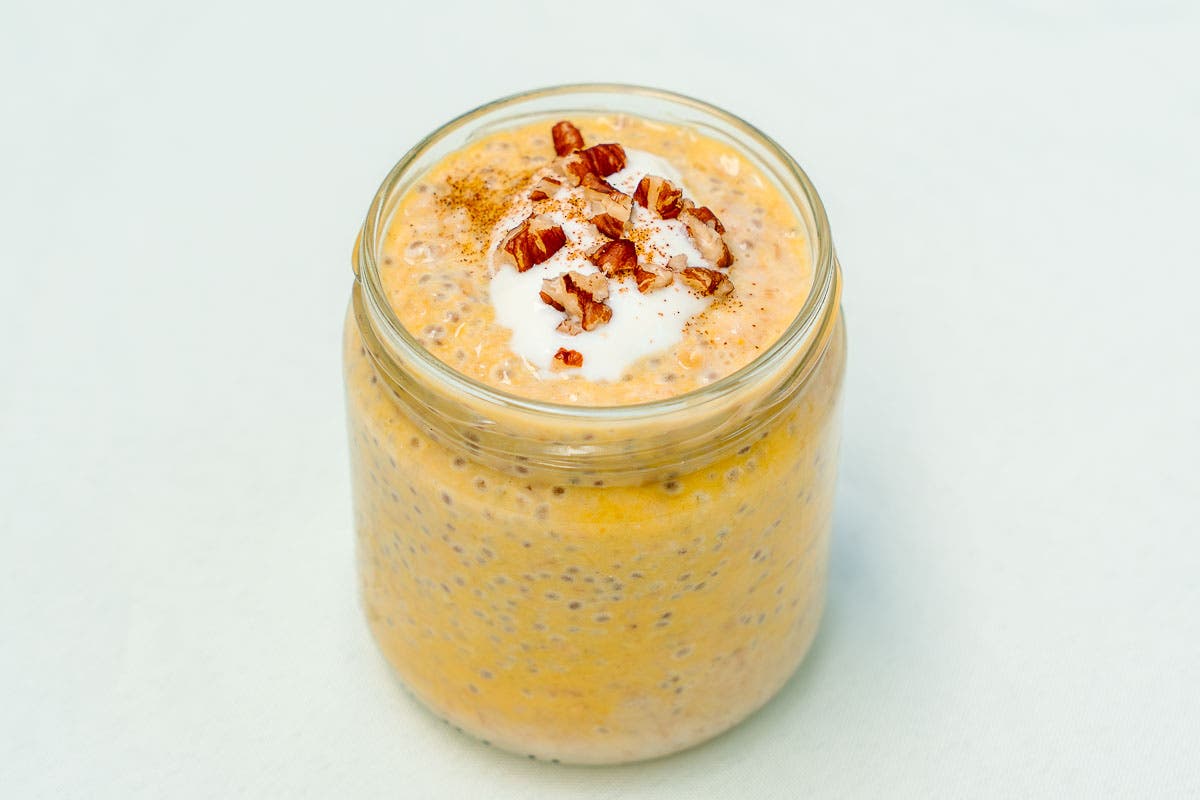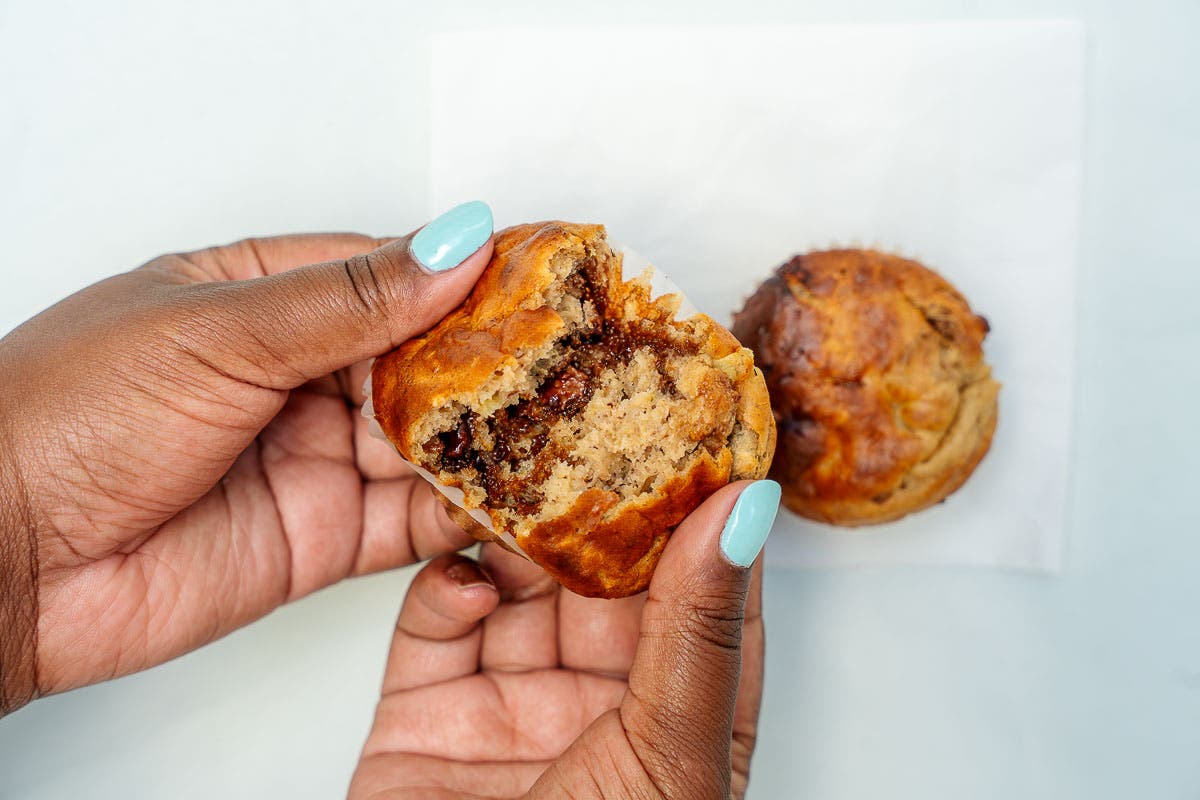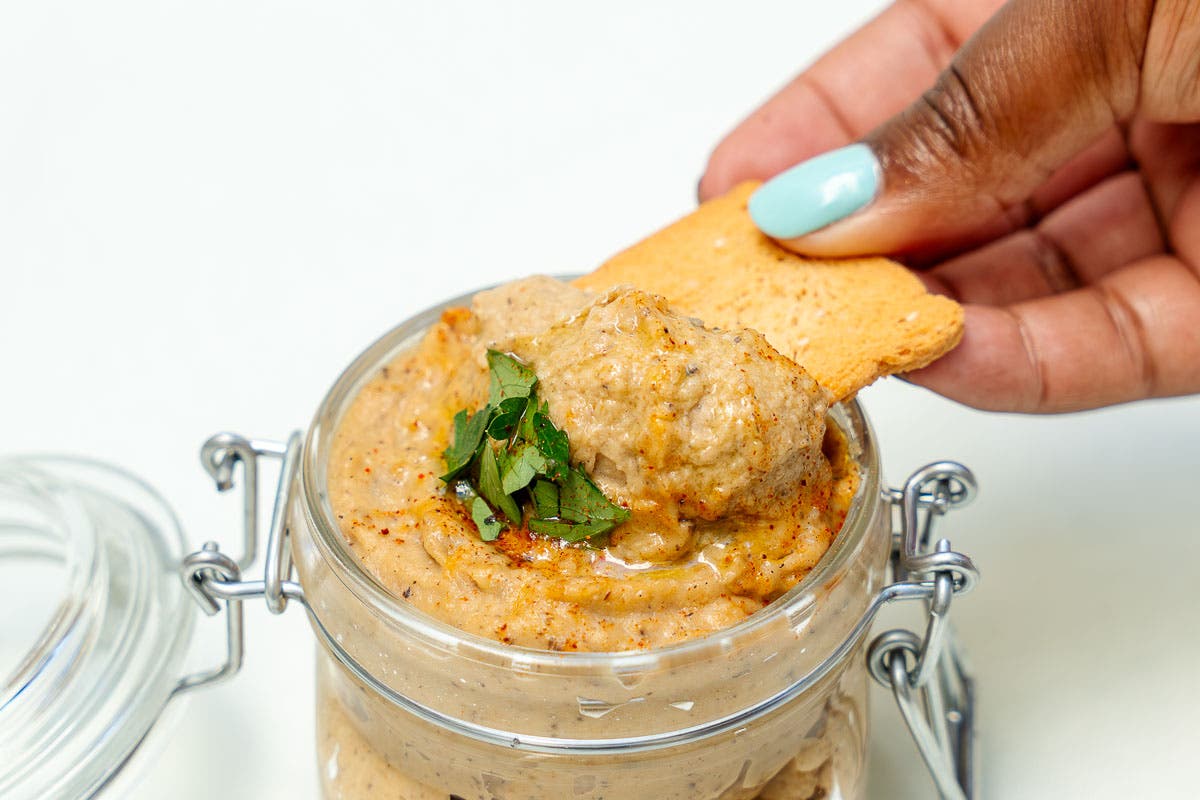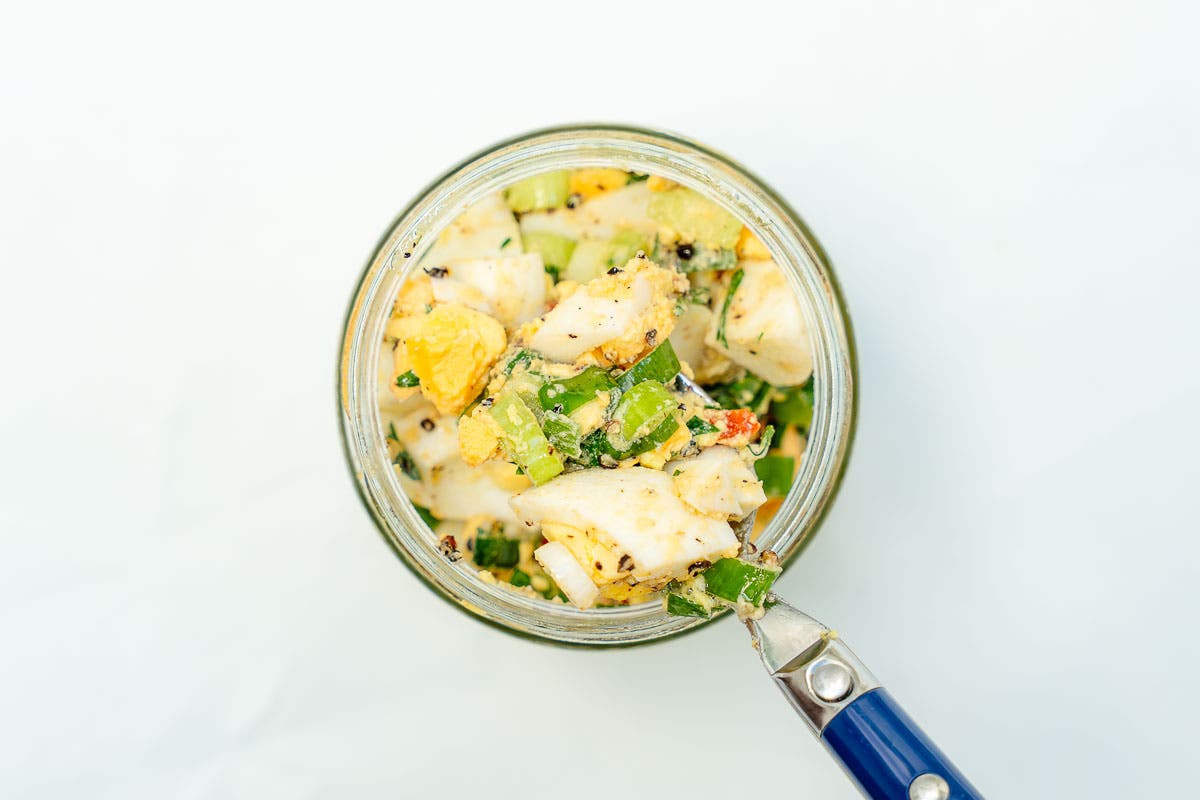4 Easy Recipes to Keep Blood Sugar Steady During Your Outdoor Adventures

(Photo: Muffins and Egg Salad: Ashia Aubourg; Design: Ayana Underwood/Canva)
Diabetes runs deep in my family. One thing I’ve noticed about the relatives who live with it: they never let the diagnosis take the flavor or joy out of their meals. They also never let it stop them from getting outside and staying active.
When I began researching blood sugar-friendly meals for myself, most of what I found appeared bland and uninspiring. So, I reached out to a few nutrition experts to learn what blood sugar actually is, what kinds of foods help keep it steady, and how to build meals around that. Then I took a few of their suggestions into the kitchen. Here’s how it went.
What Is Blood Sugar—and Why Does Balancing It Matter?
To understand blood sugar, you first need to understand glucose. “Whenever you eat food containing carbohydrates, those carbs are converted into glucose,” says Maddie Pasquariello, a registered dietitian based in New York City. A rise in blood glucose after eating is completely normal; it’s part of how the body processes energy. From there, glucose can be stored or used for fuel, which comes in handy when you’re out on the trail.
Blood sugar spikes happen. The only way to avoid them would be to cut out carbs altogether—something neither realistic nor recommended. Maintaining blood sugar balance is crucial because allowing it to remain too high for an extended period can lead to serious health issues. “When this happens, it’s because there’s excess energy [the sugar] circulating that has nowhere to go,” says Pasquariello. “This leads to hyperglycemia and type 2 diabetes.”
Ingredients That Balance Blood Sugar
“We want food sources that help slow down how quickly glucose enters the bloodstream,” says Marissa Beck, a registered dietitian based in Seattle, Washington. Fiber, protein, and healthy fats support that process by encouraging steady digestion and absorption, she explains.
Beck recommends fiber-rich foods like beans, legumes, oats, whole grains, fruits, and vegetables—all of which slow digestion and help prevent sharp rises in blood glucose. She also points to proteins such as eggs, fish, lean meats, tofu, and plain Greek yogurt, paired with carbohydrates. These combinations help prevent blood sugar swings. For healthy fats, she turns to nuts, seeds, avocado, olives, and olive oil, which further slow digestion and keep blood sugar stable.
4 Blood Sugar-Friendly Recipes That You Can Bring on Your Next Adventure
While searching for blood sugar-friendly recipes, I sought options that were both exciting and flavorful.
Below, you’ll find a few that I compiled along with my thoughts on how they came out, how they made me feel, and what the experts recommend to make them even more nourishing.
1. Pumpkin Pie Overnight Oats with Chia Seeds

I spotted a pumpkin pie overnight oats recipe—an easy, seasonal option from the recipe blog Ambitious Kitchen—and decided to test it as a make-ahead breakfast or trail snack.
Ingredients (makes one serving):
- ¼ cup plain Greek yogurt
- ½ cup unsweetened vanilla almond milk
- ¼ cup pumpkin purée
- 1-2 tablespoons maple syrup
- ½ teaspoon vanilla extract
- ½ cup rolled oats
- 2 teaspoons chia seeds
- ½ teaspoon pumpkin pie spice
Recipe:
- In a bowl, whisk together Greek yogurt, almond milk, pumpkin purée, vanilla, and maple syrup. Stir in the oats, chia seeds, and pumpkin spice until thoroughly mixed.
- Scoop the mixture into a sealable jar or container and store it in the fridge overnight, or for at least four hours.
“This is a solid blood sugar-friendly breakfast that hits on all the spots when it comes to blood sugar regulation,” says Beck. “It contains about eight grams of protein from the Greek yogurt and chia seeds, as well as nearly ten grams of fiber from the oats, pumpkin, and chia.”
Worried about the maple syrup? Beck explains that pairing it with fiber and protein helps prevent a sharp blood sugar spike, unlike eating it alongside low-fiber, low-protein foods.
For extra protein and crunch, Pasquariello suggests topping these pumpkin pie overnight oats with pumpkin seeds or pecans.
The Verdict: Filling and Tastes Like Dessert
As fall settles in, I find myself wanting to reach for more pumpkin-centric recipes. These dessert-inspired overnight oats come together in five minutes, and the fridge takes care of the rest. The texture hits that perfect middle ground: creamy, with a pudding-like texture thanks to the chia seeds and oats. I topped mine with a scoop of Greek yogurt and a handful of pecans for extra protein. Packed in a mason jar, it made for an easy, trail-ready breakfast that kept me full and fueled for hours.
2. Peanut Butter Banana Muffins

I’ve followed Ashlea Carver, founder of All the Healthy Things, for years, so when I spotted her peanut butter banana muffin recipe that comes together in under 30 minutes, I was all in.
Serving size: 2 muffins
Ingredients (makes 12 muffins):
- 1 cup mashed banana
- 3/4 cup plain Greek yogurt
- 2 large eggs
- 1/2 cup oat milk
- 1/3 cup creamy peanut butter
- 1 teaspoon vanilla extract
- 1/2 cup brown sugar
- 1 1/2 cups oat flour
- 1 teaspoon ground cinnamon
- 1 teaspoon baking soda
- 1/2 teaspoon baking powder
- 1/3 cup chocolate chips
- A pinch of sea salt
Recipe:
- Preheat the oven to 350 degrees Fahrenheit. Line a cupcake pan with muffin cups.
- In a large bowl, mix the mashed banana, eggs, Greek yogurt, peanut butter, oat milk, and vanilla extract.
- In a separate bowl, mix the oat flour, sugar, baking powder, baking soda, sea salt, and cinnamon. Fold the dry ingredients into the wet until combined. Stir in the chocolate chips.
- Scoop the batter into the liners, filling each about two-thirds full.
- Bake for 15 to 20 minutes or until a toothpick inserted into the center comes out clean and the muffin tops spring back when pressed.
Greek yogurt, peanut butter, and eggs provide protein, as well as healthy fats. Snacking on two of these muffins while you’re on the go will help slow your digestion and allow your body to release glucose gradually, says Beck. Oat flour and banana also contribute fiber, she adds.
The Verdict: Reese’s Peanut Butter Cups—but in Muffin Form
As someone who loves Reese’s cups, I couldn’t get over how well the peanut butter and chocolate flavors came through in these muffins. However, I must admit that I had some concerns about the sugar content in the recipe. Speaking with Pasquariello helped calm those nerves. She emphasized not overthinking the idea of “healthifying” recipes for blood sugar stability. If the meal feels incomplete, she mentioned that you can pair it with other nourishing sides. In this case, I followed her advice and added a side of Greek yogurt for extra protein and some strawberries for a fiber boost. I felt fully satiated eating this before a hike and didn’t crash when the inclines approached.
3. Black Eyed Pea Hummus

I started following Wendy Lopez and Jessica Jones of Food Heaven Made Easy when I began my journey of developing a healthier relationship with food. So, while researching recipes for this story, I turned to them, knowing they’d deliver something delicious. Enter: black eyed pea hummus.
Ingredients (makes two servings):
- 1 (15-ounce) can or 1 1/2 cups cooked black eyed peas
- 2 garlic cloves
- 2 tablespoons tahini
- 1/2 teaspoon berbere spice
- Juice of 1 lemon
- 1/4 teaspoon salt
- Olive oil, toasted sesame seeds, paprika, chili powder, or berbere, and fresh parsley to add as toppings
Recipe:
- Add the black eyed peas to a food processor and pulse for a few seconds.
- Toss in the garlic, berbere, lemon juice, salt, and two ice cubes. Continue pulsing for 3 to 4 minutes, until the mixture becomes smooth and creamy and the ice is fully blended. Taste and adjust the salt if needed.
- Spoon the hummus into a container, drizzle it with olive oil, and top it with toasted sesame seeds, paprika, chili powder, or more berbere, and a sprinkle of fresh parsley.
Beck is a fan of this recipe. “It’s high in fiber and plant-based protein, which naturally supports blood glucose,” she says. One cup of black-eyed peas contains 16 grams of protein, and this recipe uses nearly two cups. (Because this recipe makes two servings, you’ll get eight grams of protein in just one serving.)
For a simple fiber boost, serve the black-eyed pea hummus with crudités, such as carrot or celery sticks, says Pasquariello.
The Verdict: Creamy and Smoky
I ended up eating the whole thing by myself before my hike even wrapped up. Sure, it’s technically enough for two, but it’s so good you probably won’t want to share. Creamy and smooth, it’s perfect with crackers or crunchy veggie sticks. I tossed it into a container for the trail, but if you’re going to be out for a while, pack it in an insulated bowl to keep it cool.
4. Egg Salad with Green Olives, Celery, and Parsley

My recipe box in my New York Times app is flooded with tons of ideas. For weeks, I’d been eyeing their egg salad recipes. Because high-protein, high-fiber foods help stabilize blood sugar, I picked this one to try.
Ingredients (makes one serving):
- 4 large eggs (hard-boiled)
- ¼ cup scallions (thinly sliced)
- ¼ cup celery (thinly sliced)
- ½ cup green olives (roughly chopped)
- ½ cup flat-leaf parsley (roughly chopped)
- Pinch of red pepper flakes
- Salt and pepper (to taste)
- 2 to 3 tablespoons extra virgin olive oil
Recipe:
- Chop the boiled eggs and drop them into a medium bowl.
- Add scallions, celery, green olives, flat-leaf parsley, red pepper flakes, salt, pepper, and olive oil.
- Toss to combine, then gently mash the eggs with a fork to break them up without losing texture.
This recipe provides a generous amount of protein and fat, which helps stabilize blood sugar, according to Beck. The olive oil brings in a solid dose of healthy fat, and the veggies add a nice amount of fiber, she says. To boost the fiber even more, you can turn it into a sandwich and serve it on whole-grain bread, she adds.
The Verdict: A Little Spicy and Satiating
Even with cooler weather rolling in, I still want trail foods that feel light but satisfying. This egg salad nails it. I ate it on its own and felt completely full without that weighed-down feeling. The spicy scallions and fragrant parsley add a kick, while the olives bring tang, and the red pepper flakes offer just the right amount of heat. It travels well, too; pack it in an insulated container to keep it cool on the road.
Just like the others I tested, this recipe relies on simple ingredients, great flavor, and offers steady, lasting energy. Turns out, you don’t have to sacrifice the foods you love to keep blood sugar stable.
Want more Outside health stories? Sign up for the Bodywork newsletter. Ready to push yourself? Enter MapMyRun’s You vs. the Year 2025 running challenge.